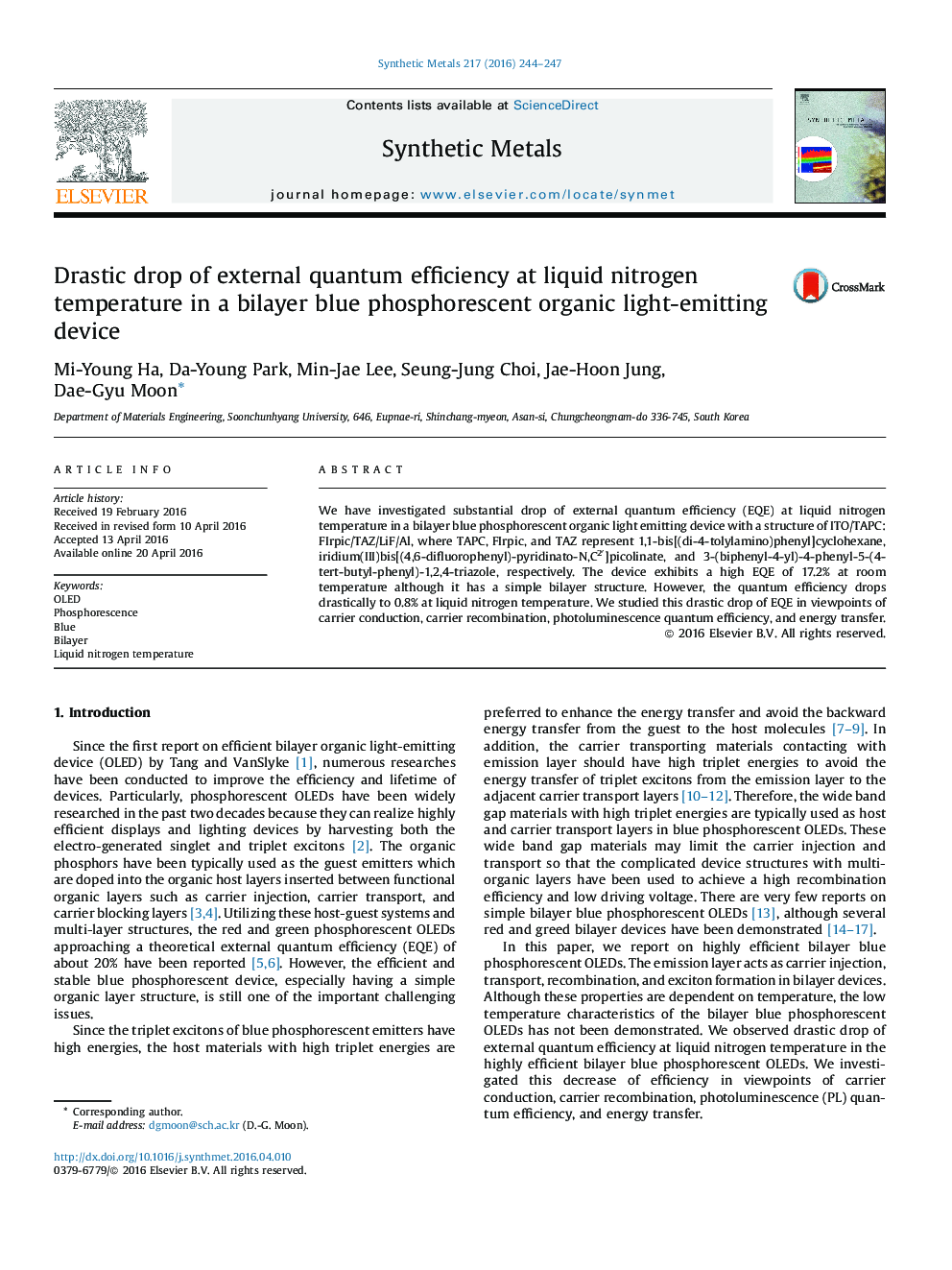| Article ID | Journal | Published Year | Pages | File Type |
|---|---|---|---|---|
| 1440197 | Synthetic Metals | 2016 | 4 Pages |
•We developed highly efficient bilayer blue phosphorescent OLEDs.•External quantum efficiency (EQE) was 17.2% at room temperature.•EQE drastically drops to 0.8% at liquid nitrogen temperature.•The drop of EQE was critically dependent on the TAZ layer.
We have investigated substantial drop of external quantum efficiency (EQE) at liquid nitrogen temperature in a bilayer blue phosphorescent organic light emitting device with a structure of ITO/TAPC:FIrpic/TAZ/LiF/Al, where TAPC, FIrpic, and TAZ represent 1,1-bis[(di-4-tolylamino)phenyl]cyclohexane, iridium(III)bis[(4,6-difluorophenyl)-pyridinato-N,C2′]picolinate, and 3-(biphenyl-4-yl)-4-phenyl-5-(4-tert-butyl-phenyl)-1,2,4-triazole, respectively. The device exhibits a high EQE of 17.2% at room temperature although it has a simple bilayer structure. However, the quantum efficiency drops drastically to 0.8% at liquid nitrogen temperature. We studied this drastic drop of EQE in viewpoints of carrier conduction, carrier recombination, photoluminescence quantum efficiency, and energy transfer.
